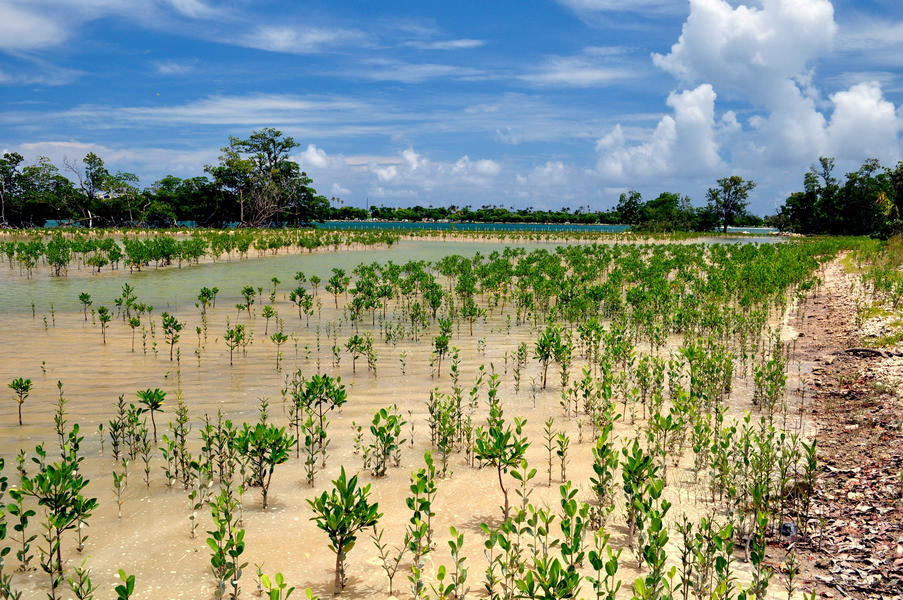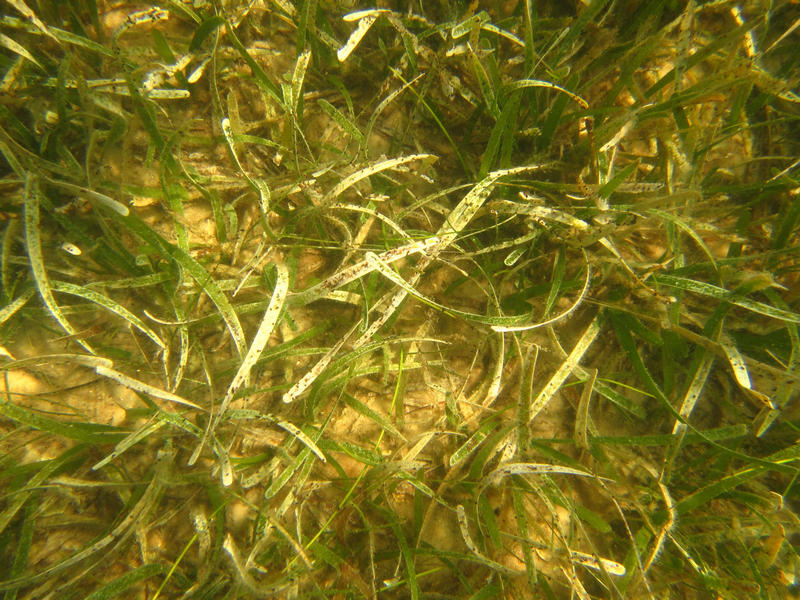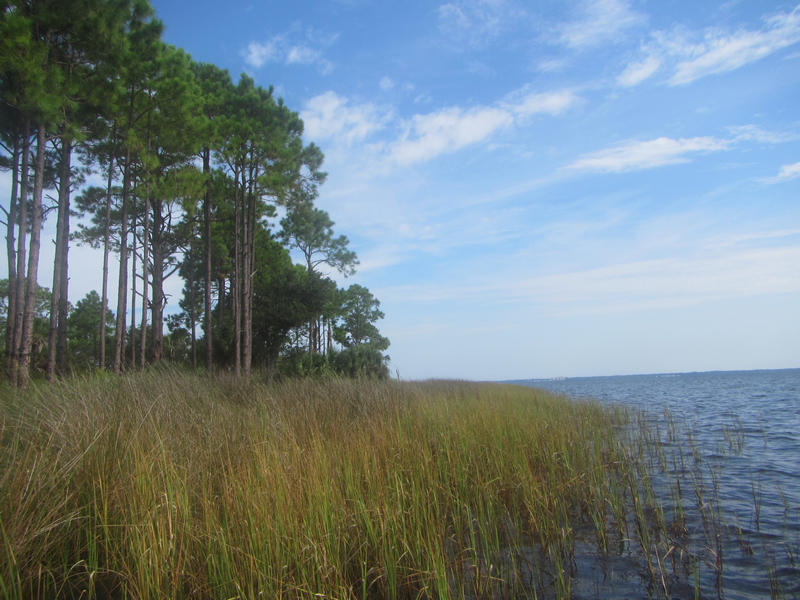

St. Andrews Aquatic Preserve
- Home
- Divisions
- Office of Resilience and Coastal Protection
- Aquatic Preserve Program
- St. Andrews Aquatic Preserve
Aquatic-Preserve Quick links
- Alligator Harbor Aquatic Preserve
- Apalachicola Bay Aquatic Preserve
- Banana River Aquatic Preserve
- Big Bend Seagrasses Aquatic Preserve
- Biscayne Bay Aquatic Preserves
- Boca Ciega Bay Aquatic Preserve
- Cape Haze Aquatic Preserve
- Cape Romano-Ten Thousand Islands Aquatic Preserve
- Cockroach Bay Aquatic Preserve
- Coupon Bight Aquatic Preserve
- Estero Bay Aquatic Preserve
- Fort Pickens Aquatic Preserve
- Gasparilla Sound-Charlotte Harbor Aquatic Preserve
- Guana River Marsh Aquatic Preserve
- Indian River-Malabar to Vero Beach Aquatic Preserve
- Indian River-Vero Beach to Fort Pierce Aquatic Preserve
- Jensen Beach to Jupiter Inlet Aquatic Preserve
- Kristin Jacobs Coral Aquatic Preserve
- Lake Jackson Aquatic Preserve
- Lemon Bay Aquatic Preserve
- Lignumvitae Key Aquatic Preserve
- Loxahatchee River-Lake Worth Creek Aquatic Preserve
- Matlacha Pass Aquatic Preserve
- Mosquito Lagoon Aquatic Preserve
- Nassau River-St. Johns River Marshes and Fort Clinch Aquatic Preserves
- Nature Coast Aquatic Preserve
- North Fork, St. Lucie Aquatic Preserve
- Oklawaha River Aquatic Preserve
- Pellicer Creek Aquatic Preserve
- Pine Island Sound Aquatic Preserve
- Pinellas County Aquatic Preserves
- Rainbow Springs Aquatic Preserve
- Rocky Bayou Aquatic Preserve
- Rookery Bay Aquatic Preserve
- St. Andrews Aquatic Preserve
- St. Joseph Bay Aquatic Preserve
- St. Martins Marsh Aquatic Preserve
- Terra Ceia Aquatic Preserve
- Tomoka Marsh Aquatic Preserve
- Wekiva River Aquatic Preserve
- Yellow River Marsh Aquatic Preserve
- All Aquatic-Preserve content
"St. Andrews Bay is one of the most highly diverse estuaries in America, with over 2,900 species. On any given day, you can find almost anything in the clear waters of St. Andrews Bay. It is also one of the most fragile coastal estuaries that needs our continued protection." - Mike Brim, Executive Director, St. Andrews Bay Environmental Science Team
- Relatively clear water is one of the characteristic features of St. Andrews Aquatic Preserve. Several factors contribute to the bay's clarity, such as its spring-fed tributaries, low amounts of silty clay in the local soils and the filtering effect of the marshes and seagrasses.
- Coastal birds of prey like osprey live around the aquatic preserve.
- The rock jetties at the entrance to the bay are inhabited by a myriad of tropical species of fish and invertebrates. Semi-tropical fish species such as cocoa damsels, angelfishes, parrotfishes, spadefishes and butterfly fishes are frequently observed during the warmer months of summer.
- The seagrass beds that are dominant on the back of Shell Island within the aquatic preserve have a diverse assemblage of fish populations including mullet, pinfish, needlefish, mojarra, seahorses, pipefish, blennies and gobies as well as many juvenile commercially and recreationally important species.
United States
St. Andrews Bay Aquatic Preserve is bordered by the maritime communities in Bay County. These areas provide access to the water at municipal boat and kayak ramps, as well as public beaches.
Visitors to the aquatic preserve enjoy snorkeling, fishing and boating in the bay. Primitive campgrounds are available on the island.
The Florida Department of State's Division of Historical Resources has identified nine archaeological sites in the immediate coastal areas of St. Andrews Aquatic Preserve. They include three shell middens (FMSF numbers BY00086, BY00087, BY00170) dating back to the middle to late Woodland Period (300-1000 A.D.) and one shell midden (BY00171) of unknown date that has been destroyed by wave action. Due to the moderate wave energy of the coastline, many relict Native American sites were probably either buried by sand or destroyed by wave action.
Notable among the historical sites are Spanish Shanty Cove (BY00086), which is an unnamed village site and shell midden affiliated with the Weeden Island culture, circa 700-1000 A.D. The site has been considered as having potential for nomination to the National Register of Historic Places. The Spanish Ante Point site (BY00087) was recorded as a village site with midden, some of whose area was occupied by tabby floor of a historic house site. BY00170, which is unnamed, and BY00171 had a Fort Walton affiliation.
A second site combining pre-contact and recent historical remains is BY00798, a mostly oyster shell midden which also contained bone and pot shards. It appears affiliated with late Weeden Island culture (prior to about A.D. 1000).
Another interesting resource is the site of two World War II era gun placements (BY01341 and BY01342) in St. Andrews State Park. The remains of one serve as the foundation for a pavilion in the Jetty Use Area. Another placement is periodically exposed on the beach shoreline from erosion.
Two picnic shelters in the park (BY01655 and BY01656) were built in 1956 as part of a designated segregated use area for African Americans. St. Andrews State Park was one of only a few state parks that allowed entry to African Americans in the 1950s.
A ninth site, the park’s Pier Store (BY01654), has been removed and was replaced by a new facility that was relocated to a more inland location in order to reduce encroachment from nearby dunes.
Coral Reefs
There are currently several species of coral and related species on the rocks and the surrounding sand of the jetties in St. Andrews Aquatic Preserve. The appearance of these corals was first noted in 2010 by Panama City Marine Institute and has continued to spread.
The largest concentration is on the pass side of the western jetty wall at a depth of 10 to 25 feet. There are also growing colonies of the Gulf side as well. Each area has at least two distinct species, one being the tube coral (Cladocora arbuscula ) and the diffuse ivory bush coral (Oculina diffusa). There are also reports of robust ivory tree coral (Oculina robusta) in the area, but identification has not yet been verified. The concentration of corals can be dense in some spots, specifically on the pass side where there is a greater flow of water. Further information about the distribution, abundance and condition of coral reef in St. Andrews Aquatic Preserve is still needed.
Octocoral Beds
The dominant animal species of octocoral beds are soft corals such as gorgonians, sea fans, sea feathers, sea fingers, sea pansies, sea plumes, sea rods and sea whips. This community is confined to the subtidal zone since the sessile organisms are highly susceptible to desiccation. Other sessile animals typically occurring in association with these soft corals are sea anemones. An assortment of non-sessile benthic and pelagic invertebrates and vertebrates (e.g., sponges, mollusks, tube worms, burrowing shrimp, crabs, isopods, amphipods, sand dollars and fishes) are associated with octocoral beds.
The distribution, abundance and condition of octocoral beds in St. Andrews Aquatic Preserve is unknown at this time. Management considerations should include locating all true octocoral beds and providing protection for them from external degradation. Primary threats to octocoral beds include siltation from beach renourishment or beach restoration projects; anchor damage by nautical craft; trawling by commercial anglers; collection for tourist-oriented trade; and water pollution, particularly oil spills.
Seagrass Beds

This community occurs in subtidal (rarely intertidal) zones, in clear, coastal waters where wave energy is moderate. Seagrasses are not true grasses but are more closely related to terrestrial lilies and gingers than grasses. The three most common species of seagrasses in Florida are turtle grass (Thalassia testudinum), manatee grass (Syringodium filiforme) and shoal grass (Halodule wrightii), which are all found in St. Andrews Aquatic Preserve. Nearly pure stands of any one of these species can occur, but mixed stands are also common.
Species of Halophila may be intermingled with the other seagrasses, but species of this genus are considerably less common than turtle grass, manatee grass and shoal grass. Widgeon grass (Ruppia maritima) also can be found occurring with the previously listed seagrasses although they occur primarily under high salinities while widgeon grass occurs in areas of lower salinity.
Attached to the seagrass leaf blades are numerous species of epiphytic algae and invertebrates. Together, seagrasses and their epiphytes serve as important food sources for manatees, sea turtles and many fish. The dense seagrasses also serve as shelter or nursery grounds for many invertebrates and fish.
St. Andrews Aquatic Preserve contains approximately 944 acres of seagrass beds, making up about 4% of the natural communities present in the aquatic preserve.
The St. Andrew Bay Resource Management Association conducted seagrass monitoring in the aquatic preserve (as well as other areas of St. Andrews Bay) from 2000-2010. A statewide FWC Fish and Wildlife Research Institute report stated that from 1992-2003, seagrass cover had increased throughout the bay. However, tropical storms in 2004 and 2005 along with increasing watershed development may have impacted seagrasses since the last mapping effort .
Salt Marshes

Salt marshes are expanses of grasses, rushes and sedges along coastlines of low wave energy and river mouths. The area just inside the border of St. Andrews Aquatic Preserve contains 15 acres of salt marsh, making up less than 1% of the natural communities present in the aquatic preserve, but more extensive marshes are immediately adjacent. Most of the salt marsh occurs on the bay side of Shell Island over much of the length of the island, and it is in good condition.
Black needlerush (Juncus roemerianus) and sawgrass (Cladium mariscoides) dominate this community. The salt marsh community on Shell Island declined following the hurricane activities of 2004 and 2005 due to an influx of saltwater and overwash throughout the island. Many of these areas are now beach dune or coastal grassland habitat due to sand migration and the subsequent increase in beach elevation that no longer succumbs to tidal inundation.
Algal Beds
Algal beds are areas with large populations of non-drift macro or micro algae. This community may occur in subtidal, intertidal and supratidal zones on soft and hard bottom substrates. Vascular plants (e.g., seagrasses) may occur in algal beds associated with soft bottoms. Sessile animals associated with algal beds will vary based on bottom type.
For algal beds associated with hard bottom substrate, animal populations will be similar to populations associated with octocoral beds and sponge beds. Those associated with soft bottom substrate may have similar benthic and pelagic species in addition to infauna species. Recent research has shown that algal beds provide critical habitat for juvenile spiny lobsters, a species of great commercial importance.
The distribution, abundance and condition of algal beds in St. Andrews Aquatic Preserve is unknown at this time.
The location of major beds must be determined before this natural community can be managed adequately. Existing state dredge-and-fill laws provide specific protection for marine and estuarine seagrass beds but not for algal beds. The correction of this deficiency could prove to be the most effective management tool available.
The primary threat to marine and estuarine algal beds are dredging and filling activities that physically remove or bury the beds. Other damage occurs from increased turbidity in the water column, which reduces available light; pollution, particularly from oil spills; and damage from boats.
Sponge Beds
The dominant animal species of sponge beds are sponges such as branching candle sponge (Aplysina cauliformis), Florida loggerhead sponge (Spheciospongia vesparium) and sheepswool sponge (Hippospongia lachne). Although concentrations of living sponges can occur in marine and estuarine intertidal zones, sponge beds are confined primarily to subtidal zones. Other sessile animals typically occurring in association with these sponges are stony corals, sea anemones, mollusks, tube worms, isopods, amphipods, burrowing shrimp, crabs, sand dollars and fishes. Sessile and drift algae can also be found scattered throughout sponge beds.
The distribution, abundance and condition of sponge beds in St. Andrews Aquatic Preserve is unknown at this time. Management considerations include locating all true sponge beds within the aquatic preserve and providing protection for them from external degradation. Primary threats to sponge beds include siltation from beach renourishment or beach restoration projects; anchor damage by nautical craft; trawling by commercial anglers; collection for tourist-oriented trade; and water pollution, particularly oil spills.
Consolidated Substrate
Consolidated substrates are solidified rock or shell conglomerates and include coquina, limerock or relic reef materials that lack dense populations of sessile plant and animal species. These communities may be sparsely inhabited by sessile, planktonic, epifaunal, and pelagic plants and animals but house few infaunal organisms (i.e., animals living within the substrate). The distribution and abundance of consolidated substrate in St. Andrews Aquatic Preserve is unknown at this time.
Unconsolidated Substrate
Unconsolidated substrates include coralgal, marl, mud, mud/sand, sand or shell. This community may support a large population of infaunal organisms as well as a variety of transient planktonic and pelagic organisms (e.g., tube worms, sand dollars, mollusks, isopods, amphipods, burrowing shrimp and an assortment of crabs).
The condition of this community within the adjacent St. Andrews State Park is considered to be excellent. Generally fine sugar-white sand is the major constituent on the gulf side of the park. Many renourishment activities have been used to abate erosion of the state park’s mainland beach.
Tidal flats are present on the bay side of Shell Island. This natural community extends itself from the low tide line along the bay shoreline landward. This community grades into seagrass beds and salt marsh habitat in some locations. Some areas of the bay shore are eroding and others are accreting. In the eroding areas, exposed roots can be found along the bay shore at low tide, indicating the amount of erosion. Other eroding areas on Shell Island are converting into salt marsh habitat due to lower elevations and the resulting salt water intrusion. Wider beach areas along the bay shore and exposed tidal flats are utilized by foraging shorebirds.
In particular, areas with open access from the beach dune habitat or marine unconsolidated habitat are important foraging areas for shorebird broods (i.e., with flightless young) at low tides.
Composite Substrate
Composite substrates consist of a combination of natural communities such as “beds” of algae and seagrasses or areas with small patches of consolidated and unconsolidated bottom with or without sessile floral and faunal populations.
Composite substrates may be dominated by any combination of marine and estuarine sessile flora or fauna, or mineral substrate type. Typical combinations of plants, animals and substrates representing composite substrates include soft and stony corals with sponges on a hard bottom such as a limerock outcrop; algae and seagrasses scattered over a sand bottom; and patch reefs throughout a coralgal bottom. Any of the remaining marine and estuarine natural communities can grade into composite substrate communities.
The distribution, abundance and condition of composite substrate in St. Andrews Aquatic Preserve is currently unknown. Combinations of consolidated and unconsolidated substrate components, like those likely found in St. Andrews Aquatic Preserve, offer the greatest opportunity for diversity and should be high priority areas for protection. Management requirements are negligible providing the composite community is adequately protected.
Protection efforts will vary slightly based on components of the composite substrate community. Generally, degradation of physical and chemical water quality parameters should be prevented, as well as mechanical disturbance from anchoring, dredging, trawling and similar activities.
Interested in subscribing to DEP newsletters or receiving DEP updates through email?
Sign UpAbout DEP
The Florida Department of Environmental Protection is the state’s lead agency for environmental management and stewardship – protecting our air, water and land. The vision of the Florida Department of Environmental Protection is to create strong community partnerships, safeguard Florida’s natural resources and enhance its ecosystems.
Learn MoreContact
3900 Commonwealth BoulevardTallahassee, Florida 32399-3000 Public.Services@FloridaDEP.gov 850-245-2118
